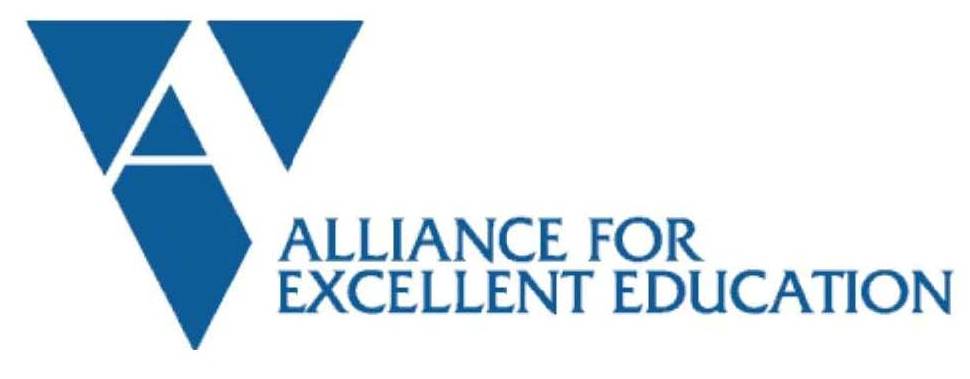Alliance for Excellent Education’s Building on the CCSS to Improve Learning for ELLs
 On February 26 I was fortunate to attend the Alliance for Excellent Education’s briefing on the CCSS for ELLs in Washington, DC. The briefing focused on how CCSS shifts will affect ELLs, as well as multiple ways in which the CCSS serve as an opportunity to improve ELLs’ learning and support educators’ collaboration.
On February 26 I was fortunate to attend the Alliance for Excellent Education’s briefing on the CCSS for ELLs in Washington, DC. The briefing focused on how CCSS shifts will affect ELLs, as well as multiple ways in which the CCSS serve as an opportunity to improve ELLs’ learning and support educators’ collaboration.
The Alliance for Excellent Education has recently published a policy brief titled The Role of Language and Literacy in College- and Career-Ready Standard in October 2012. Bob Wise, President of the Alliance for Excellent Education and former governor of West Virginia, set the mood for the morning by noting that while the Common Core will be used with ninety percent of all students in the U.S., adoption of the CCSS “is one thing, but implementation is another.”
In that spirit, the panelists discussed a number of factors in the implementation of CCSS with ELLs and included the following key CCSS stakeholders who approached the implementation of the CCSS for ELLs from several perspectives:
- Kenji Hakuta, Lee L. Jacks Professor of Education, Stanford University
- Angelica Infante, Chief Executive Officer, Office of English Language Learners, New York City Department of Education
- Carrie Heath Phillips, Program Director, Common Core State Standards Implementation, Council of Chief State School Officers
- Susan Pimentel, Education Analyst and Standards and Curriculum Specialist
- Delia Pompa, Senior Vice President of Programs, National Council of La Raza
- Bob Wise, President, Alliance for Excellent Education
Later in the day, the same panelists recorded a webinar. You can access all the materials from the face to face briefing and webinar here.
Themes for the Day
Some of my previous posts have been about efforts undertaken by Understanding Language and the Council of Chief State School Officers as well as the creation of the new English Language Proficiency Development (ELPD) Framework. So, in this post I’ll focus on briefing discussion topics related to current CCSS implementation efforts for ELLs in New York City.
CCSS in New York City
Angelica Infante, a former bilingual teacher and official in the New York City Department of Education, began her presentation by sharing “before and after” professional development stories. Before the arrival of the Common Core, she told us that the school system’s ELL professional development was primarily directed at ESL and Bilingual teachers. However, she soon realized that with the implementation of the CCSS, professional development needed to be reframed as a team approach in which administrators, ESL, Bilingual, and content teachers were at the table together as equal stakeholders with expertise to share. The district began experimenting with a six-month professional development program in which teachers participate in an ongoing process of adapting their practice, trying it in the classroom, and then evaluating the changes and continuing the conversation with colleagues. As a result of this new approach, she reports that more staff members are beginning to embrace the Common Core and are buying into the premise that ELLs are everyone’s responsibility. Teams are working on curriculum, and teachers have more strategies so that ELLs could do the work required by the CCSS.
In addition, she shared a valuable insight, which is that her ESL teachers were initially somewhat nervous about working with the Common Core. That hadn’t been immediately clear to her when the Common Core work began, but through the professional development initiative, those concerns are being aired and addressed together. She also noted that the district has set aside Title III funding to provide grants for Common Core professional development for schools serving newcomer students and Students with Interrupted Schooling as a way to address their unique needs and challenges, including socio-emotional support and teaching older ELLs to read.
Towards the end of her discussion, Ms. Infante shared that when the teachers piloted Understanding Language’s persuasion unit in one of the summer professional development sessions, one student commented, “This is the most I’ve learned all year.” While she wished that had not been the case, that student's honest comment made her hopeful about the implementation of the CCSS with her ELLs. Perhaps her most powerful point came in her closing comments when she stressed the most important piece of the puzzle to successfully implement the CCSS for ELLs is that ESL teachers must be invited to the table. What should ESL teachers do if they aren’t invited? It doesn't matter, she said. “Sit yourself at that table.”








Add new comment